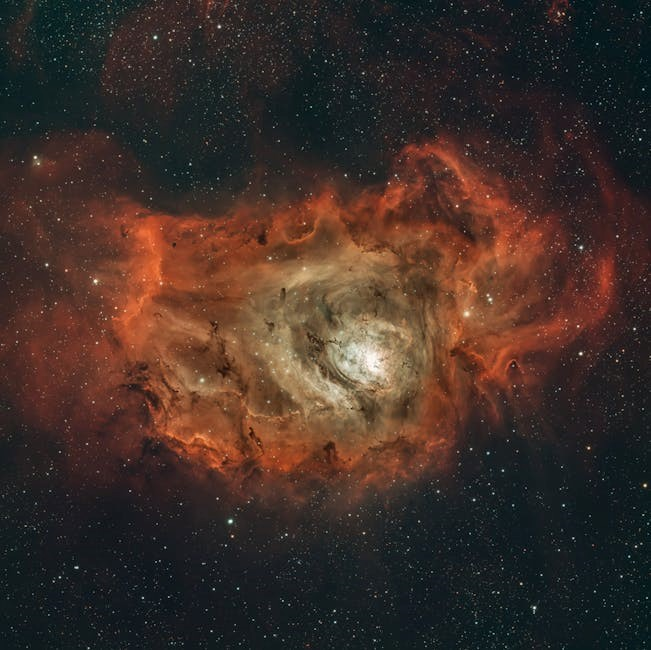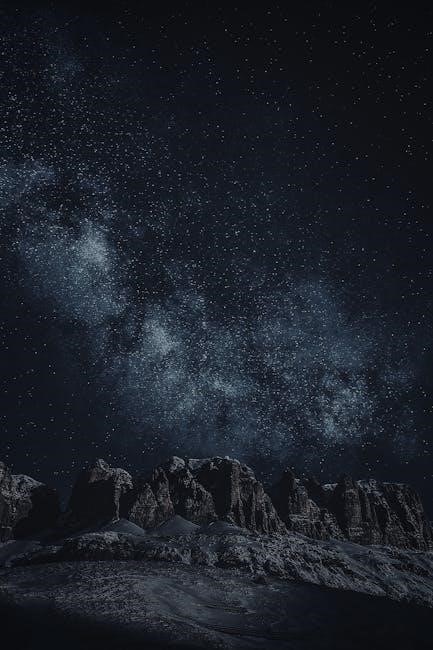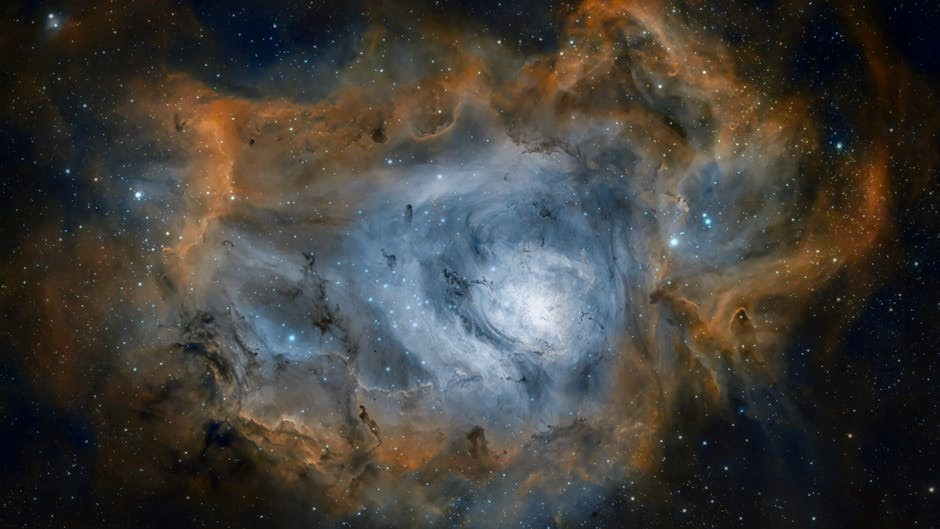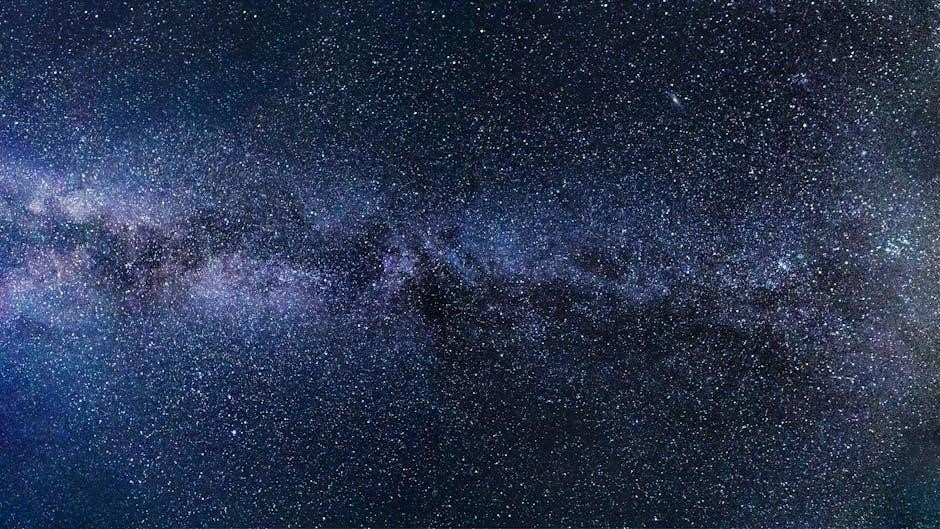The Hitchhiker’s Guide to the Galaxy is a cult classic blending humor and science fiction, evolving from a radio series into a beloved multimedia phenomenon, deeply influencing pop culture.

Overview of the Series and Its Popularity
The Hitchhiker’s Guide to the Galaxy, created by Douglas Adams, has become a cultural phenomenon, transcending its origins as a radio series to spawn novels, TV shows, films, and games. Its unique blend of humor, satire, and science fiction captivated audiences globally, making it a timeless classic. The series has been translated into over 30 languages and has sold over 15 million copies worldwide, solidifying its place as one of the most beloved science fiction franchises. Its popularity lies in its witty storytelling, memorable characters, and universal themes, appealing to fans of all ages and backgrounds. This intergalactic adventure continues to inspire new adaptations and remains a cornerstone of pop culture.
Author Douglas Adams and His Legacy
Douglas Adams, a visionary writer, comedian, and intellectual, is best known for creating The Hitchhiker’s Guide to the Galaxy. His career began in radio and theater, where his unique wit and imaginative storytelling first shone. Adams’ legacy lies in his ability to blend humor with profound philosophical and scientific themes, making complex ideas accessible and entertaining. His unexpected death in 2001 shocked fans worldwide, but his work continues to inspire. Adams’ influence extends beyond literature, impacting comedy, science fiction, and pop culture. His creation of The Hitchhiker’s Guide has left an indelible mark, earning him a place as one of the most iconic authors of the 20th century. His legacy endures through his timeless writing and the devoted fan base it has fostered.
The Multimedia Phenomenon: Books, Radio, TV, and Film
The Hitchhiker’s Guide to the Galaxy began as a groundbreaking radio series in 1978, captivating audiences with its unique blend of humor and science fiction. Its success led to the publication of the first novel in 1979, which became a global phenomenon. The series expanded into television in the 1980s, introducing visual storytelling to fans. A feature film adaptation followed in 2005, bringing the story to the big screen with a star-studded cast. Additionally, the series inspired a video game, stage adaptations, and even a Belgian progressive rock opera. This multimedia evolution solidified its place in popular culture, ensuring its enduring relevance and appeal across generations and platforms.

The Literary Series
The literary series includes five novels, starting with The Hitchhiker’s Guide to the Galaxy (1979) and concluding with Mostly Harmless (1992), loved for their witty science fiction and humor.
The Hitchhiker’s Guide to the Galaxy (1979)
The Hitchhiker’s Guide to the Galaxy, the first novel in the series, introduces Earthman Arthur Dent and his alien friend Ford Prefect. As Earth is demolished for a hyperspace bypass, Arthur embarks on a cosmic adventure. Originally conceived as a radio series, the book expands on the broadcast, blending science fiction with satire and humor. Its unique wit and imaginative storytelling quickly captivated audiences, making it a cult classic. The novel ranked fourth in the BBC’s Big Read poll, showcasing its enduring popularity. This seminal work laid the foundation for the series, exploring themes of existence, technology, and humanity’s place in the universe with irreverent charm.
The Restaurant at the End of the Universe (1980)
The Restaurant at the End of the Universe is the second book in Douglas Adams’ series, continuing the intergalactic adventures of Arthur Dent, Ford Prefect, and their companions. The story introduces Zaphod Beeblebrox, the two-headed president of the galaxy, and Marvin, the perpetually depressed android. The crew visits the legendary Milliways, a restaurant at the end of time, where diners can watch the destruction of the universe while enjoying exotic cuisine. This installment expands on Adams’ unique blend of science fiction, satire, and absurd humor, exploring themes of time travel, cosmic bureaucracy, and existential absurdity. The book deepens the series’ quirky charm, further cementing its cult status and loyal fan base.
Life, the Universe and Everything (1982)
Life, the Universe and Everything is the third installment in Douglas Adams’ series, introducing new characters like Agrajag and the Vogons while deepening the cosmic satire. Arthur Dent, Ford Prefect, and their companions embark on a quest to find the Ultimate Answer to Life, the Universe, and Everything. The story explores themes of fate, free will, and the absurdity of existence, with Adams’ signature wit and creative world-building. This book expands the series’ humor, blending science fiction with philosophical musings, and solidifies its reputation as a masterpiece of comedic science fiction. It continues to captivate readers with its unique blend of absurdity and intellectual depth.
So Long, and Thanks for All the Fish (1984)
So Long, and Thanks for All the Fish is the fourth book in Douglas Adams’ series, published in 1984. This installment shifts focus to Arthur Dent’s unexpected return to Earth, which he discovers has not been destroyed after all. The story introduces new characters, such as Wonko the Sane, and explores themes of love and humanity. Arthur’s journey delves into the complexities of human emotions and relationships, offering a fresh perspective on the series’ cosmic satire. This book stands out for its unique tone, blending humor with heartfelt moments, and further solidifies the series’ reputation as a masterful blend of science fiction and comedy. It remains a fan favorite for its quirky charm and emotional depth.
Mostly Harmless (1992)
Mostly Harmless, the final book in Douglas Adams’ series, was published in 1992. It introduces Trisha McMillan, a character with a surprising connection to Arthur Dent, and explores themes of humanity’s place in the universe. The story delves into darker tones, reflecting Adams’ evolving perspective on life and technology. The book concludes the series with a poignant and thought-provoking ending, leaving readers with a lasting impression of the series’ unique blend of humor and philosophy. Fans appreciate its depth and emotional resonance, making it a fitting conclusion to the Hitchhiker’s saga, despite its bittersweet tone. It remains a cherished part of the series’ legacy.

The Radio Series
The Hitchhiker’s Guide to the Galaxy began as a groundbreaking radio series on BBC Radio 4 in 1978, captivating audiences with its unique blend of humor and science fiction.
Origins and First Broadcast in 1978

The Hitchhiker’s Guide to the Galaxy originated as a radio comedy series broadcast on BBC Radio 4 in March 1978. Created by Douglas Adams, it began as a six-part weekly series, blending humor, science fiction, and absurdity. The show follows the misadventures of Arthur Dent and Ford Prefect as they travel through space. Its unique storytelling and satirical take on science fiction quickly gained a cult following. The radio series laid the foundation for the franchise’s success, leading to novels, TV adaptations, and further radio episodes. Its anniversary in 2018 marked its enduring legacy with a new BBC radio series, celebrating four decades of intergalactic humor and wit.
The 2018 Anniversary Radio Series
In 2018, the BBC celebrated the 40th anniversary of The Hitchhiker’s Guide to the Galaxy with a new radio series. Titled Hexagonal Phase, it featured the original cast, including Simon Jones as Arthur Dent and Geoffrey McGivern as Ford Prefect. The series adapted Douglas Adams’ unfinished ideas, ensuring his voice remained central. Jane Horrocks and Stephen Hawking also contributed, adding depth and star power. This revival not only honored Adams’ legacy but also introduced the series to a new generation, proving its timeless appeal. The production remained faithful to the original’s humor and spirit, solidifying its place in radio history.
Impact and Legacy of the Radio Adaptation
The radio adaptation of The Hitchhiker’s Guide to the Galaxy revolutionized science fiction comedy, setting the foundation for its multimedia success. Its unique blend of humor, creativity, and absurdity captivated audiences, making it a cult classic. The series’ original 1978 broadcast introduced fans to Douglas Adams’ iconic characters and universe, sparking widespread acclaim and initiating a devoted fan base. Over the years, the radio version has remained a cornerstone of the franchise, influencing adaptations across formats. Its legacy endures through annual celebrations like Towel Day, honoring Adams’ work. The radio series’ timeless appeal continues to inspire new generations, solidifying its place in pop culture history.

The Television Adaptation
The television adaptation of The Hitchhiker’s Guide to the Galaxy brought Douglas Adams’ universe to screens in 1981 as a six-part miniseries, blending quirky humor and sci-fi visuals.
Production and Release of the TV Series
The television adaptation of The Hitchhiker’s Guide to the Galaxy was produced by the BBC and released in 1981 as a six-part miniseries. Faithful to Douglas Adams’ original radio series, it retained the quirky humor and imaginative storytelling that defined the franchise. The production featured a mix of practical effects and early CGI, reflecting the era’s technological limitations while adding to its charm. Directed by Alan J. Levi, the series covered the events of the first two novels, The Hitchhiker’s Guide to the Galaxy and The Restaurant at the End of the Universe. Its release coincided with the growing popularity of the books, further cementing the series’ cult status. Despite mixed reviews, the TV adaptation remains a beloved interpretation of Adams’ work.
Reception and Cultural Significance
The TV adaptation of The Hitchhiker’s Guide to the Galaxy was well-received by fans and critics, praised for its faithful adaptation of Douglas Adams’ work. Despite some criticism for its visual effects, the series captured the essence of the original material, blending humor and science fiction seamlessly. It became a cult classic, further solidifying the franchise’s legacy. The show’s unique style and quirky charm resonated with audiences, making it a memorable chapter in the series’ multimedia journey. Its influence on British television and science fiction comedy remains significant, leaving a lasting impact on popular culture and fostering a dedicated fan base that continues to celebrate its brilliance.
Key Characters and Casting Choices
The TV series showcased iconic characters like Arthur Dent, the unwitting human survivor, played by Simon Jones, and Ford Prefect, his alien friend, portrayed by David Dixon. Zaphod Beeblebrox, the two-headed president, was memorably played by Mark Wing-Davey, while Trillian, the intelligent human woman, was brought to life by Sandra Dickinson. Marvin, the melancholic robot, voiced by Stephen Moore, became a fan favorite. The casting choices were praised for capturing the quirky essence of Douglas Adams’ characters, with each actor embodying their roles’ unique traits. These performances have left a lasting impression on fans, making the characters timeless and unforgettable in the hearts of viewers worldwide.

The Movie Adaptation
The film adaptation, released in 2005, brought Douglas Adams’ universe to the big screen, featuring Martin Freeman as Arthur Dent and Mos Def as Ford Prefect.
Development and Release of the Film
The film adaptation of The Hitchhiker’s Guide to the Galaxy was released in 2005, produced by Spyglass Entertainment and Touchstone Pictures. Directed by Garth Jennings, it brought Douglas Adams’ universe to life with a unique visual style. The screenplay, written by Karey Kirkpatrick, balanced humor and science fiction, appealing to both fans and newcomers. Martin Freeman starred as Arthur Dent, with Mos Def as Ford Prefect, Zooey Deschanel as Trillian, and Alan Rickman as the voice of Marvin the Paranoid Android. The film premiered worldwide, marking a significant milestone in the franchise’s multimedia journey, blending faithful adaptation with creative liberties to honor Adams’ vision and legacy.
Box Office Performance and Critical Reception
The 2005 film adaptation of The Hitchhiker’s Guide to the Galaxy grossed over $100 million worldwide on a $50 million budget, achieving moderate box office success. Critics praised its visual effects and faithful adaptation of key themes, though some felt it lacked the depth of the book. The film holds a mixed critical reception, with a 60% approval rating on Rotten Tomatoes, highlighting its appeal to fans while acknowledging it may not fully capture the novel’s essence. Audiences appreciated the humor and creativity, though purists noted deviations from the original material. Despite this, the film remains a celebrated visual interpretation of Douglas Adams’ iconic story.
Differences from the Book and Radio Series
The 2005 film adaptation of The Hitchhiker’s Guide to the Galaxy introduced several deviations from the original book and radio series. Key characters like Marvin the Paranoid Android and Zaphod Beeblebrox retained their essence, but some plot points were simplified or altered for cinematic pacing. The film omitted certain subplots, such as the supercomputer Deep Thought’s detailed backstory, and added new elements like the character of Humma Kavula. While the core humor and themes remained intact, fans noted these changes, sparking debates about fidelity to the source material. Despite these differences, the film captured the spirit of Douglas Adams’ irreverent wit and imaginative universe, appealing to both newcomers and long-time fans.

The Video Game Adaptation
The Hitchhiker’s Guide to the Galaxy video game, released in 1984, offered a text-based adventure with puzzles and humor, faithful to the book’s quirky charm and legacy.
Release and Gameplay Overview
The Hitchhiker’s Guide to the Galaxy video game, released in 1984 by Infocom, is a text-based adventure that immerses players in Douglas Adams’ iconic universe. Players assume the role of Arthur Dent, navigating a series of challenges and puzzles to progress through the story. The game features a unique interface where players input commands to interact with the environment, solving inventive and often humorous puzzles. Its faithful adaptation of the book’s wit and charm made it a favorite among fans, despite its challenging difficulty. The game remains a cult classic, celebrating the series’ legacy with its engaging gameplay and loyal representation of Adams’ vision.
Reception and Legacy in Gaming Culture
The Hitchhiker’s Guide to the Galaxy video game, released in 1984 by Infocom, became a cult classic, celebrated for its witty humor and challenging puzzles. As a text-based adventure, it demanded creative problem-solving, resonating with fans of the book. Its innovative gameplay and loyal adaptation of Douglas Adams’ universe earned it a dedicated following. The game’s legacy endures as a landmark in interactive fiction, influencing later adventure games. Its reputation as a notoriously difficult yet rewarding experience has cemented its place in gaming history. Today, it remains a cherished retro title, admired for its intellectual depth and humorous charm, continuing to inspire new generations of gamers and fans of the series.

Cultural Impact and Fandom
The Hitchhiker’s Guide to the Galaxy has inspired a devoted fan base, with Towel Day celebrated annually to honor Douglas Adams. Its unique blend of humor and science fiction has cultivated a global following, fostering vibrant communities and memorabilia. The series’ influence extends beyond entertainment, shaping pop culture and inspiring countless adaptations and tributes, solidifying its status as a cult phenomenon.
Towel Day and Its Significance
Towel Day, celebrated on May 25th, honors Douglas Adams and his iconic series. Fans worldwide commemorate the day by carrying towels, symbolizing the guide’s advice for intergalactic travelers. The humble towel, deemed the “most massively useful thing,” represents resilience and humor, embodying the series’ spirit. This tradition fosters community, with events and tributes dedicated to Adams’ legacy. It reflects the enduring impact of his work, inspiring fans to embrace creativity and wit. Towel Day has become a cultural milestone, celebrating not just the book but the shared joy it brings to millions, ensuring Adams’ influence remains timeless in science fiction and comedy.
Fan Communities and Memorabilia
Fan communities for The Hitchhiker’s Guide to the Galaxy are vibrant and dedicated, with enthusiasts worldwide connecting through forums, events, and social media. Memorabilia ranges from rare first-edition books to themed merchandise like towels, mugs, and apparel. The series’ iconic characters, such as Marvin the Paranoid Android, have inspired countless fan art and cosplay. Collectors seek items like vinyl records of the radio series, movie props, and limited-edition box sets. These communities celebrate the series’ wit and creativity, fostering a sense of belonging among fans. Memorabilia serves as a testament to the series’ enduring popularity, allowing fans to showcase their love for Adams’ universe in unique and imaginative ways.
Influence on Science Fiction and Comedy
The Hitchhiker’s Guide to the Galaxy revolutionized both science fiction and comedy, blending the two genres in a way that resonated globally. Its unique humor and satirical take on technology and society influenced countless authors, writers, and creators. The series’ irreverent style and absurdity set a new standard for comedic storytelling in science fiction, inspiring works like Red Dwarf and Futurama. Beyond literature, it shaped radio, TV, and film, proving that sci-fi could be both entertaining and thought-provoking. Its legacy continues to inspire new generations, cementing its place as a cultural touchstone that transcends traditional genre boundaries. Fans and creators alike celebrate its enduring impact on both humor and speculative fiction.

Themes and Humor in the Series
The series explores themes of existentialism, technology, and society with satirical humor, blending absurdity and wit to create a unique comedic science fiction experience.
Science Fiction and Satire
The Hitchhiker’s Guide to the Galaxy masterfully blends science fiction with biting satire, critiquing societal norms, politics, and technology through absurd, humorous narratives. The series uses hyper-intelligent beings, cosmic dilemmas, and illogical scenarios to highlight human folly. Adams’ unique wit transforms complex sci-fi concepts into accessible, comedic commentary. The series mocks bureaucratic inefficiency, existential crises, and the search for life’s meaning, offering a fresh perspective on humanity’s place in the universe. This blend of satire and science fiction creates a timeless appeal, making the series a cornerstone of both genres while inspiring countless adaptations and fan interpretations.
Philosophical and Existential Themes
The Hitchhiker’s Guide to the Galaxy delves into profound philosophical and existential questions, wrapping them in humor and absurdity. The series explores the meaning of life, the universe, and everything through the iconic number 42, symbolizing the futility of seeking simple answers to complex existential dilemmas. It challenges notions of purpose, free will, and humanity’s significance in an vast, indifferent cosmos. Themes of existential despair and the search for meaning are juxtaposed with comedic elements, creating a unique balance between introspection and entertainment. The series invites readers to reflect on life’s mysteries while embracing the absurdity of existence, resonating deeply with audiences seeking both laughter and intellectual stimulation.
Unique Humor and Wit in the Series
The Hitchhiker’s Guide to the Galaxy is renowned for its unique blend of absurdity, satire, and intellectual humor. Douglas Adams masterfully crafts a universe where the ridiculous and the sublime coexist, often mocking science fiction tropes and societal norms. The series’ wit is sharp and irreverent, with characters like Marvin the Paranoid Android and Zaphod Beeblebrox embodying its comedic brilliance. From the absurdity of Vogon poetry to the illogical logic of hyper-intelligent beings, the humor is both clever and accessible. Adams’ writing style, filled with irony and wordplay, creates a laugh-out-loud experience while exploring deeper philosophical themes. This balance of humor and intelligence has made the series a timeless classic, appealing to fans of comedy and science fiction alike.
The Hitchhiker’s Guide to the Galaxy remains a timeless classic, celebrating Douglas Adams’ legacy. Its blend of humor, science fiction, and philosophy continues to captivate audiences globally, ensuring its enduring relevance.
Legacy of “The Hitchhiker’s Guide to the Galaxy”
The Hitchhiker’s Guide to the Galaxy has cemented its place as a cult classic, with over 15 million copies sold worldwide and translations into more than 30 languages. Its unique blend of humor, science fiction, and philosophy has inspired countless adaptations, including radio series, TV shows, films, and even a video game. The series’ influence extends beyond entertainment, shaping pop culture and sparking intellectual debates. Fans celebrate Towel Day annually to honor Douglas Adams’ work, while its themes of existentialism and satire continue to resonate. The Guide’s legacy lies in its ability to entertain and provoke thought, ensuring its relevance across generations and mediums, making it a timeless gem in science fiction literature.
Future Adaptations and Continued Relevance
The Hitchhiker’s Guide to the Galaxy continues to captivate audiences with new adaptations, ensuring its enduring relevance. A new BBC radio series in 2018 revisited the original story, featuring the original cast and introducing the series to fresh listeners. Discussions for potential film sequels and television reboots are ongoing, with modern audiences eager for fresh interpretations. The series’ timeless themes of humor, science fiction, and existentialism resonate across generations, making it a prime candidate for adaptation in emerging media formats. Its cultural impact remains strong, with fan communities thriving and memorabilia enduring as symbols of its legacy. The Guide’s ability to evolve while retaining its core charm ensures its continued presence in popular culture, solidifying its place as a sci-fi icon.
